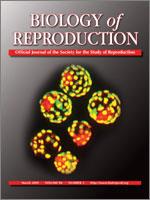Spermiogenesis is a complex process consisting of three main phases: the round, elongating, and elongated spermatid phases. Although the germ cells acquire a haploid set of paternal chromosomes after meiosis, how functional these male haploid germ cells are as male gametes at various differentiation stages has remained unclear. We selectively injected specific steps of haploid male germ cells into oocytes and assessed the function of the zygotes. Applying the transillumination technique using acrosin-green fluorescent protein transgenic mice, we succeeded in selecting four types of haploid male germ cells for microinsemination: early round spermatids (steps 2–3), late round spermatids (steps 7–8), elongating spermatids (steps 9–10), and elongated spermatids (step 16). The microinsemination technique revealed that the early and late round spermatids had similar developmental abilities in producing progeny, indicating that the nuclear status of newly generated round spermatids was similar to that of late round spermatids. An increased birthrate of progeny was first observed in steps 9–10 of elongating spermatids, but the frequency was slightly lower than that of the elongated spermatids. These results indicated that the transition from steps 7–8 of round spermatids to steps 9–10 of elongating spermatids is a key step in changing the nuclear status of male gametes in producing progeny.
How to translate text using browser tools
1 March 2009
Functional Analysis of Male Mouse Haploid Germ Cells of Various Differentiation Stages: Early and Late Round Spermatids Are Functionally Equivalent in Producing Progeny
Hiroshi Ohta,
Yuko Sakaide,
Teruhiko Wakayama
ACCESS THE FULL ARTICLE

Biology of Reproduction
Vol. 80 • No. 3
March 2009
Vol. 80 • No. 3
March 2009
developmental biology
embryo
ICSI
ROSI
round spermatid
spermatid
spermatogenesis




